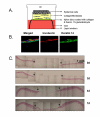Organotypic modelling as a means of investigating epithelial-stromal interactions during tumourigenesis
- PMID: 19077226
- PMCID: PMC2614933
- DOI: 10.1186/1755-1536-1-8
Organotypic modelling as a means of investigating epithelial-stromal interactions during tumourigenesis
Abstract
The advent of co-culture approaches has allowed researchers to more accurately model the behaviour of epithelial cells in cell culture studies. The initial work on epidermal modelling allowed the development of reconstituted epidermis, growing keratinocytes on top of fibroblasts seeded in a collagen gel at an air-liquid interface to generate terminally differentiated 'skin equivalents'. In addition to developing ex vivo skin sheets for the treatment of burns victims, such cultures have also been used as a means of investigating both the development and repair of the epidermis, in more relevant conditions than simple two-dimensional culture, but without the use of animals. More recently, by varying the cell types used and adjusting the composition of the matrix components, this physiological system can be adapted to allow the study of interactions between tumour cells and their surrounding stroma, particularly with regards to how such interactions regulate invasion. Here we provide a summary of the major themes involved in tumour progression and consider the evolution of the approaches used to study cancer cell behaviour. Finally, we review how organotypic models have facilitated the study of several key pathways in cancer development and invasion, and speculate on the exciting future roles for these models in cancer research.
Figures


References
-
- Harlozinska A. Progress in molecular mechanisms of tumor metastasis and angiogenesis. Anticancer Res. 2005;25:3327–3333. - PubMed
-
- Kawaguchi T. Cancer metastasis: characterization and identification of the behavior of metastatic tumor cells and the cell adhesion molecules, including carbohydrates. Curr Drug Targets Cardiovasc Haematol Disord. 2005;5:39–64. - PubMed
-
- Fidler IJ. The pathogenesis of cancer metastasis: the 'seed and soil' hypothesis revisited. Nat Rev Cancer. 2003;3:453–458. - PubMed
-
- Wittekind C, Neid M. Cancer invasion and metastasis. Oncology. 2005;69:14–16. - PubMed
-
- Kang Y, Siegel PM, Shu W, Drobnjak M, Kakonen SM, Cordon-Cardo C, Guise TA, Massague J. A multigenic program mediating breast cancer metastasis to bone. Cancer Cell. 2003;3:537–549. - PubMed
Grants and funding
LinkOut - more resources
Full Text Sources

